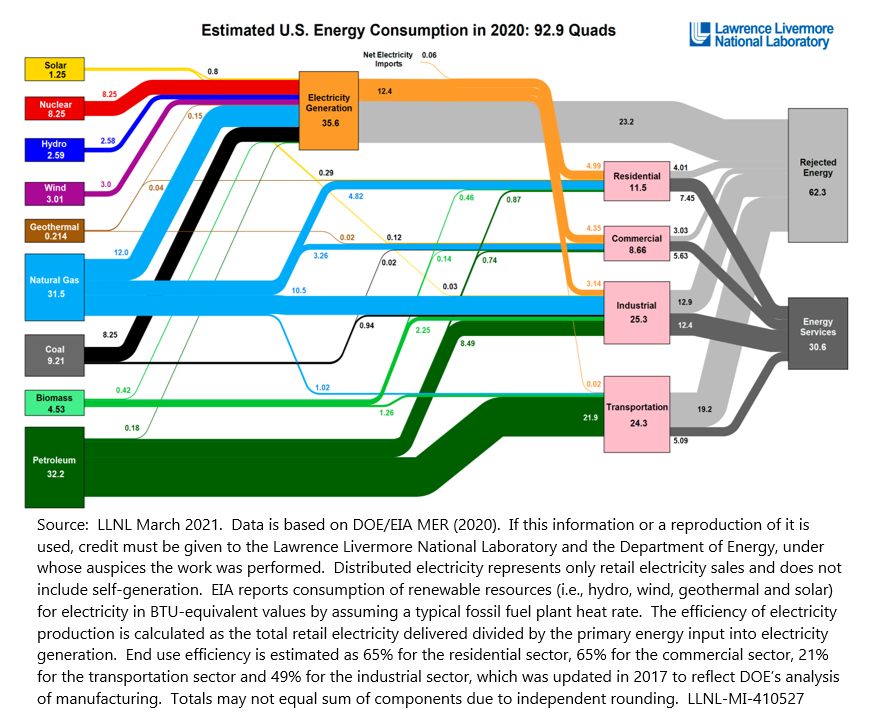
I am thrilled and honored to serve as the Director of the Nebraska Center for Energy Sciences Research (NCESR). Together we will continue creating and pursuing bold initiatives to fulfill our shared vision and aspirations. The leadership of NPPD and UNL took the primary step in 2006 when they established NCESR. NPPD’s commitment to the energy center is even stronger today, as shown by the 50% increase in financial support to NCESR since the inception!
In my first communication with you, I would like to remind us all of NCESR’s vision and discuss the steps to take to achieve its vision. But first, an analysis of the energy consumption in the U.S., delineated clearly in the graph shown (credit Lawrence Livermore National Laboratory), which can be used to guide NCESR’s future activities. This analysis shows the following:
Percentage of various energy sources in the U.S.
- Fossil Fuels [Petroleum: 34.66%, Natural Gas: 33.91%, Coal: 9.91%]: 78.5%
- Nuclear: 8.9%
- Renewables [Solar: 1.35%, Hydro: 2.79%, Wind: 3.24%, Geothermal: 0.23%, Biomass: 4.9%]: 12.6%
- Rejected energy: 67%
- Intense research on renewables and nuclear (zero-carbon)
- Intense research on fossil fuels to:
- Increase efficiency of energy consumption
- Capture of carbon dioxide (major greenhouse gas (GHG))
- Increase efficiency of energy consumption
To achieve the vision, we need to:
- Work closely with NPPD leadership in formulating innovative paths to the vision
- Balance funding between renewable and fossil fuel energy sources targeting an increase in energy efficiency and carbon capturing
- Fund nuclear energy research (not renewable but carbon-free)
- Pursue additional funding sources for NCESR
- Pursue external funding to leverage NCESR funding (about 10:1 over 3-5 years)
- Build a community of UNL energy researchers and increase the visibility of NCESR nationally and internationally:
- Invite program managers from funding agencies (DOE, ARPA-E, DARPA, NSF, etc.) to UNL.
- Organize an annual conference where NCESR funded research will be presented
- Emphasize interdisciplinary research, intellectual property (IP) and start-ups
- Co-fund research projects with other UNL funding centers, such as the Daugherty Water for Food Global Institute.
- Fund proposals strategically to build the infrastructure for multi-million external funding.
- Invite program managers from funding agencies (DOE, ARPA-E, DARPA, NSF, etc.) to UNL.
I am enthusiastic and energized about the potential to expand the collaboration between NPPD and UNL. Our efforts will be guided by the mission as presented in the Energy Center Charter Document: “To conduct energy research that produces new technologies, processes and systems that provide new or significantly enhanced energy sources and improve the quality of life and economic opportunity for Nebraskans."